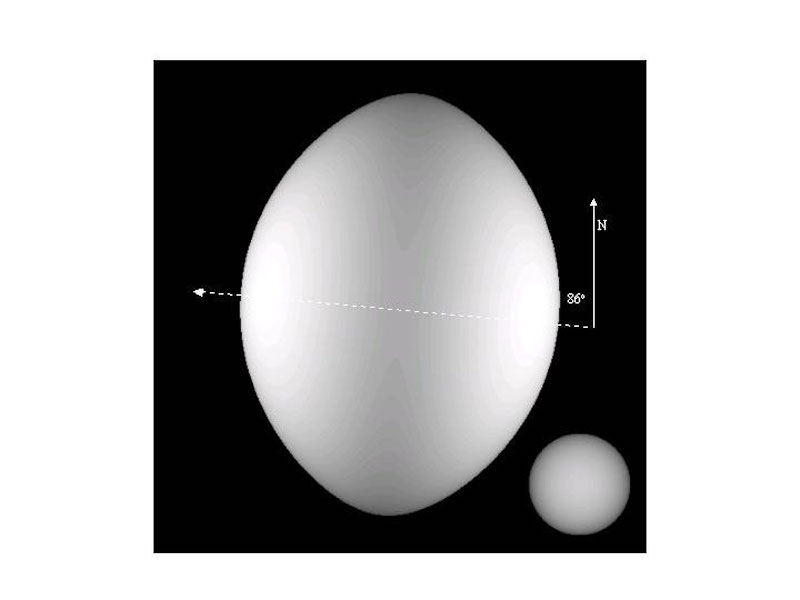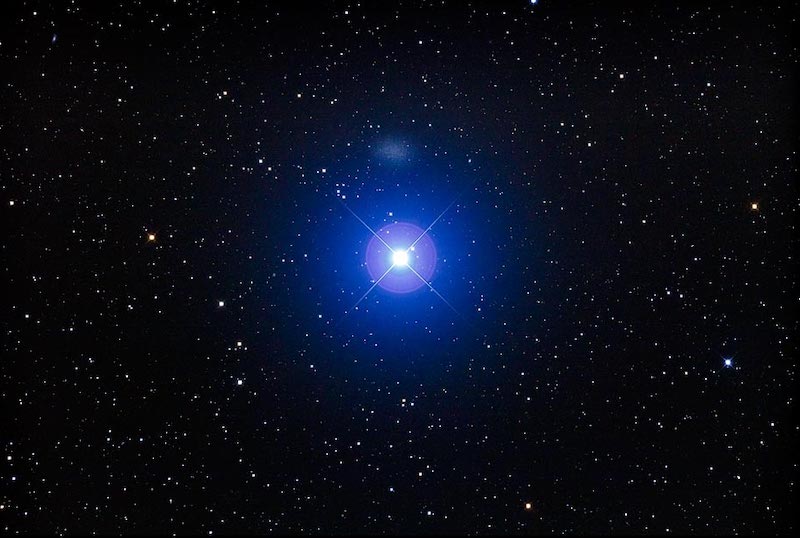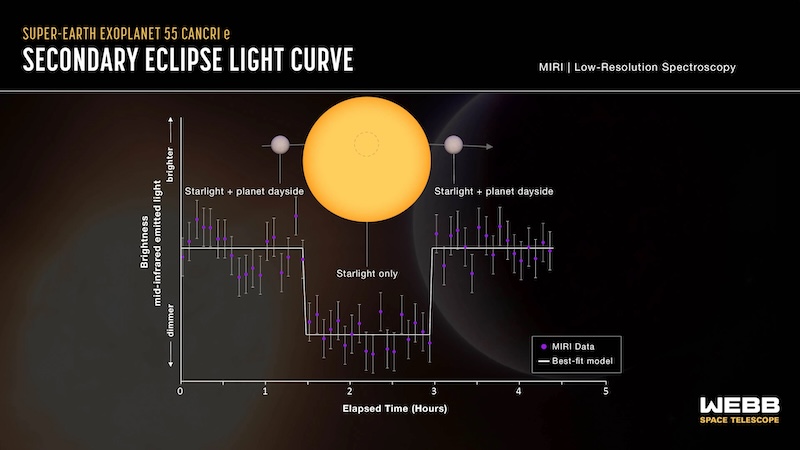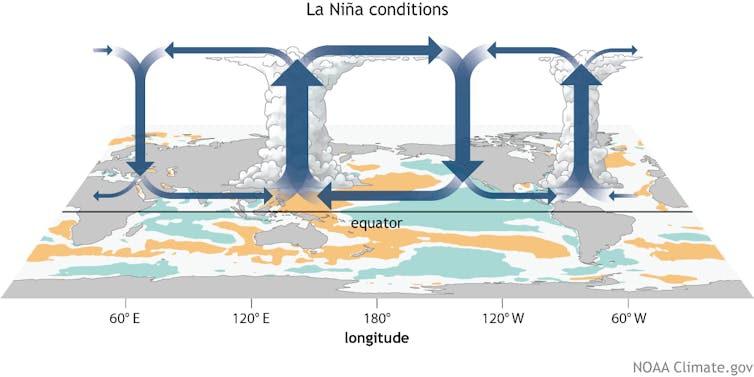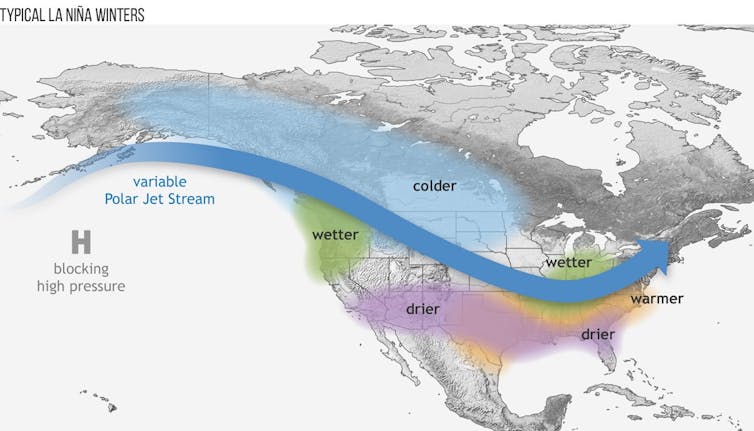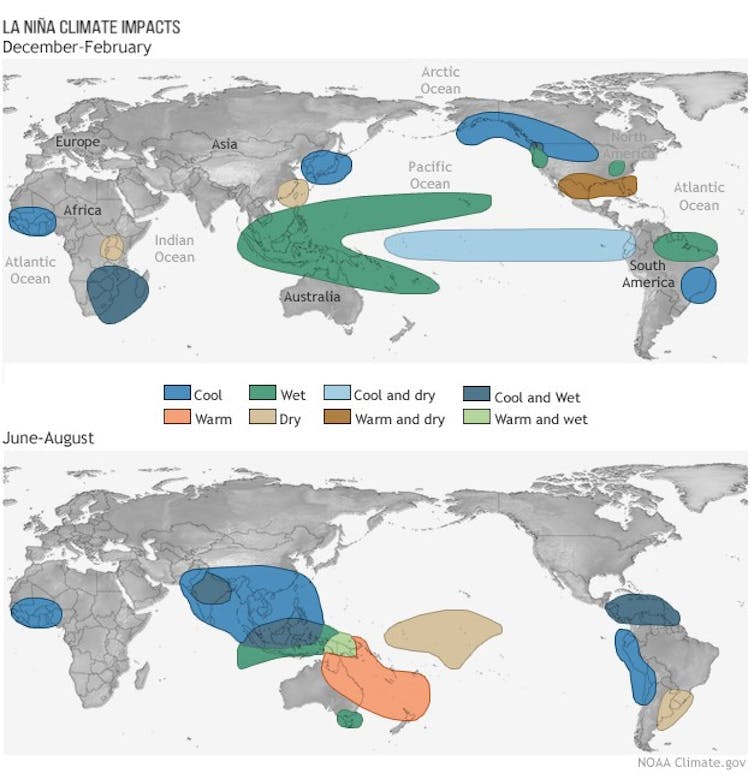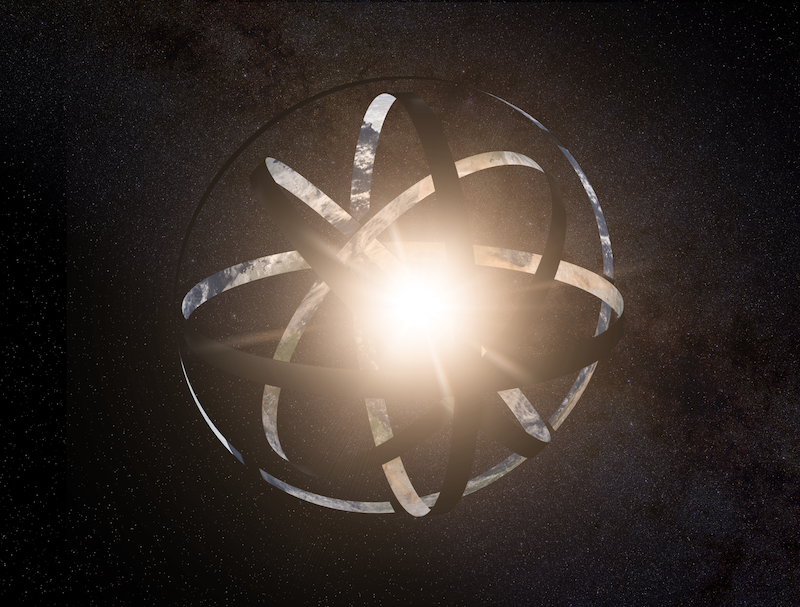
EarthSky’s Will Triggs created this 1-minute video summary for you, of the recent discovery of 60 Dyson sphere candidates.
- If any truly exist, Dyson spheres, or Dyson swarms, are artificial megastructures, built by extraterrestrial civilization to harness their stars’ energy.
- Astronomers have found 60 possible candidates stars, after searching through millions of stars for signs of Dyson spheres.
- The 60 candidate stars range from red dwarfs to larger stars including sun-like stars, up to 6,500 light-years away. All show excesses of infrared heat that, so far, scientists haven’t explained.
60 new Dyson sphere candidates
If they exist, Dyson spheres are gargantuan artificial structures, built by extraterrestrial civilizations around around their stars, with the goal of capturing energy. First proposed in 1960 by physicist Freeman Dyson, they are an incredible thought experiment. But do such objects really exist? Two teams of astronomers in Sweden and Italy recently conducted a new search for possible evidence of Dyson spheres. The astronomers examined 5 million stars, up to 6,500 light-years away. And they found 60 possible candidate stars. The stars, both red dwarfs (or M dwarfs) and larger ones including sun-like stars, are emitting up to 60 times more infrared heat than scientists expected.
However, the results fit with what astronomers would expect to see from Dyson spheres. The teams found the candidates in the latest Gaia DR3 data from the European Gaia satellite as well as the Two Micron All Sky Survey (2MASS) and Wide-field Infrared Survey Explorer (WISE).
The researchers said it is difficult to explain the observations with currently known natural processes. And even if the process is most likely a previously unknown natural phenomenon, it’s still a fascinating discovery.
Jonathan O’Callaghan, a science journalist based in London, wrote about the head-scratching results in New Scientist on May 10, 2024.
Dyson spheres are vast structures that could be used by aliens to capture the energy of a star – and astronomers have found signals from 60 stars in the Milky Way consistent with such devices. https://t.co/Ozyzaqds8B
— New Scientist (@newscientist) May 10, 2024
Two new papers are currently available in the Monthly Notices of the Royal Astronomical Society and arXiv. The first one (May 6, 2024) focuses on seven red dwarf stars, and the second one (March 27, 2024) covers the other 53 stars.
A technosignature hiding in public data
The first paper stated:
Dyson spheres, megastructures that could be constructed by advanced civilizations to harness the radiation energy of their host stars, represent a potential technosignature, that in principle may be hiding in public data already collected as part of large astronomical surveys.
7 Dyson sphere candidates around red dwarfs
The stars studied range from red dwarfs to sun-like stars to ones larger than our sun. Additionally, most of the stars are also older, although a few appear to be young.
Matías Suazo at Uppsala University in Sweden led the team that discovered the seven candidates around red dwarf stars. All these candidates are within 900 light-years of Earth.
Like the second team, they found an excess of infrared radiation around those stars. According to the researchers, the stars appeared up to 60 times brighter in infrared than they expected. This excess infrared radiation is one of the signatures of possible Dyson spheres. The paper said:
Finally, the pipeline identifies seven candidates deserving of further analysis. All of these objects are M dwarfs, for which astrophysical phenomena cannot easily account for the observed infrared excess emission.
There are several natural explanations for the infrared excess in literature, but none of them clearly explains such a phenomenon in the candidates, especially given that all are M dwarfs.
And, as of now, at least, difficult to explain with known natural causes. So, could there be a non-natural explanation? It’s possible, and as Suazo said in New Scientist:
The most fascinating explanation could be actual Dyson spheres.
Unexplained spikes in infrared radiation
As the researchers explained, the spikes in infrared radiation with these seven red dwarfs are consistent with a temperature up to 400 degrees Celsius (750 degrees Fahrenheit). They would, theoretically, be consistent with a partial Dyson sphere, where multiple giant segments or satellites orbit the star instead of one closed sphere. That’s a variation of a Dyson sphere that scientists have also theorized. The New Scientist article said:
This excess infrared heat would have been caused by temperatures of up to 400 degrees Celsius, consistent with what we might expect from a Dyson sphere. Up to 16% of each star would have to be obscured to account for the excess, meaning it would more likely be a variant of the idea called a Dyson swarm – a collection of large satellites orbiting the star to collect energy – if truly of artificial origin.
Co-author Jason Wright at Pennsylvania State University said:
This isn’t like a single solid shell around the star.

53 more candidates
The seven candidates around red dwarf stars are intriguing, but there’s more. Specifically, 53 more candidates, all larger stars, some like our own sun. These were the focus of the second paper. Gabriella Contardo at the International School for Advanced Studies (SISSA) in Italy led this search. These stars are up to 6,500 light-years away. The paper said:
Stellar infrared excesses can indicate various phenomena of interest, from protoplanetary disks to debris disks, or (more speculatively) technosignatures along the lines of Dyson spheres. In this paper, we conduct a large search for such excesses, designed as a data-driven contextual anomaly detection pipeline. We focus our search on FGK stars close to the main sequence to favor non-young host stars. We look for excess in the mid-infrared, unlocking a large sample to search in while favoring extreme infrared excess akin to the ones produced by extreme debris disks.
While most of the stars are older, a few appear to be younger, as the paper noted:
We obtained a set of 53 candidates that display interesting mid-infrared excess. A few of those objects appear to be young stars (showing high hydrogen alpha emission). A significant fraction of our candidates seems to have variability in the optical, and some in the mid-infrared. This can also indicate youth, but a proper age estimation using gyrochronology and a variability analysis is required.
Possible explanations
Scientists don’t know the cause of the excess infrared heat on all these stars. The observations fit with what astronomers have said they would expect to see from Dyson spheres or swarms, based on theoretical studies. Of course, that doesn’t prove these really are alien megastructures … at least not yet. Hot, planet-forming debris disks – protoplanetary disks – are one possibility. The problem is most of the 60 stars are old. Any planet-forming debris disks should have cooled and disappeared by now. That is, of course, apart from possible asteroid belts or Oort clouds, like in our own solar system. But even those are extremely cold environments.
Likewise, another idea is each star just happens to be in front of a more distant galaxy, as seen from Earth. But how likely is that? We don’t know yet.
More observations needed
To be sure, while the observations are difficult to explain with known natural processes, there could still be some other natural mechanism, unknown until now, that would explain them. Only further observations, perhaps by the James Webb Space Telescope, will help scientists figure out what’s really going on. As Contardo noted:
Both sets of candidates are interesting. You need follow-up observations to confirm anything.
Wright added:
Either we’ll rule them all out and say Dyson spheres are quite rare and very hard to find, or they’ll hang around as candidates and we’ll study the heck out of them.
The first paper concluded:
We would like to stress that although our candidates display properties consistent with partial Dyson spheres, it is definitely premature to presume that the mid-infrared presented in these sources originated from them. The mid-infrared data quality for these objects is typically quite low, and we require additional data to determine their nature.

The invention of the Dyson sphere
In the 1960s, physicist and astronomer Freeman J. Dyson proposed the idea of artificial megastructures built by an alien civilization more advanced than our own. Their objective is to capture as much heat from the host star as possible, for energy purposes. Various concepts range from complete spheres around the stars to partial spheres or rings. An alternative to a complete sphere enclosing the star would be a partial sphere. These solar panels would orbit and surround the host star as a Dyson swarm.
Bottom line: Two teams of astronomers in Europe say they have found 60 Dyson sphere candidates. Are they alien megastructures or a previously unknown natural phenomenon?
Source: Project Hephaistos – II. Dyson sphere candidates from Gaia DR3, 2MASS and WISE
Source: A Data-Driven Search For Mid-Infrared Excesses Among Five Million Main-Sequence FGK Stars
Read more: A Dyson sphere harvests the energy of stars
Read more: How Gaia could help find Dyson spheres
The post Astronomers find 60 Dyson sphere candidates, among millions of searched stars first appeared on EarthSky.
from EarthSky https://ift.tt/VQaDjcp

EarthSky’s Will Triggs created this 1-minute video summary for you, of the recent discovery of 60 Dyson sphere candidates.
- If any truly exist, Dyson spheres, or Dyson swarms, are artificial megastructures, built by extraterrestrial civilization to harness their stars’ energy.
- Astronomers have found 60 possible candidates stars, after searching through millions of stars for signs of Dyson spheres.
- The 60 candidate stars range from red dwarfs to larger stars including sun-like stars, up to 6,500 light-years away. All show excesses of infrared heat that, so far, scientists haven’t explained.
60 new Dyson sphere candidates
If they exist, Dyson spheres are gargantuan artificial structures, built by extraterrestrial civilizations around around their stars, with the goal of capturing energy. First proposed in 1960 by physicist Freeman Dyson, they are an incredible thought experiment. But do such objects really exist? Two teams of astronomers in Sweden and Italy recently conducted a new search for possible evidence of Dyson spheres. The astronomers examined 5 million stars, up to 6,500 light-years away. And they found 60 possible candidate stars. The stars, both red dwarfs (or M dwarfs) and larger ones including sun-like stars, are emitting up to 60 times more infrared heat than scientists expected.
However, the results fit with what astronomers would expect to see from Dyson spheres. The teams found the candidates in the latest Gaia DR3 data from the European Gaia satellite as well as the Two Micron All Sky Survey (2MASS) and Wide-field Infrared Survey Explorer (WISE).
The researchers said it is difficult to explain the observations with currently known natural processes. And even if the process is most likely a previously unknown natural phenomenon, it’s still a fascinating discovery.
Jonathan O’Callaghan, a science journalist based in London, wrote about the head-scratching results in New Scientist on May 10, 2024.
Dyson spheres are vast structures that could be used by aliens to capture the energy of a star – and astronomers have found signals from 60 stars in the Milky Way consistent with such devices. https://t.co/Ozyzaqds8B
— New Scientist (@newscientist) May 10, 2024
Two new papers are currently available in the Monthly Notices of the Royal Astronomical Society and arXiv. The first one (May 6, 2024) focuses on seven red dwarf stars, and the second one (March 27, 2024) covers the other 53 stars.
A technosignature hiding in public data
The first paper stated:
Dyson spheres, megastructures that could be constructed by advanced civilizations to harness the radiation energy of their host stars, represent a potential technosignature, that in principle may be hiding in public data already collected as part of large astronomical surveys.
7 Dyson sphere candidates around red dwarfs
The stars studied range from red dwarfs to sun-like stars to ones larger than our sun. Additionally, most of the stars are also older, although a few appear to be young.
Matías Suazo at Uppsala University in Sweden led the team that discovered the seven candidates around red dwarf stars. All these candidates are within 900 light-years of Earth.
Like the second team, they found an excess of infrared radiation around those stars. According to the researchers, the stars appeared up to 60 times brighter in infrared than they expected. This excess infrared radiation is one of the signatures of possible Dyson spheres. The paper said:
Finally, the pipeline identifies seven candidates deserving of further analysis. All of these objects are M dwarfs, for which astrophysical phenomena cannot easily account for the observed infrared excess emission.
There are several natural explanations for the infrared excess in literature, but none of them clearly explains such a phenomenon in the candidates, especially given that all are M dwarfs.
And, as of now, at least, difficult to explain with known natural causes. So, could there be a non-natural explanation? It’s possible, and as Suazo said in New Scientist:
The most fascinating explanation could be actual Dyson spheres.
Unexplained spikes in infrared radiation
As the researchers explained, the spikes in infrared radiation with these seven red dwarfs are consistent with a temperature up to 400 degrees Celsius (750 degrees Fahrenheit). They would, theoretically, be consistent with a partial Dyson sphere, where multiple giant segments or satellites orbit the star instead of one closed sphere. That’s a variation of a Dyson sphere that scientists have also theorized. The New Scientist article said:
This excess infrared heat would have been caused by temperatures of up to 400 degrees Celsius, consistent with what we might expect from a Dyson sphere. Up to 16% of each star would have to be obscured to account for the excess, meaning it would more likely be a variant of the idea called a Dyson swarm – a collection of large satellites orbiting the star to collect energy – if truly of artificial origin.
Co-author Jason Wright at Pennsylvania State University said:
This isn’t like a single solid shell around the star.

53 more candidates
The seven candidates around red dwarf stars are intriguing, but there’s more. Specifically, 53 more candidates, all larger stars, some like our own sun. These were the focus of the second paper. Gabriella Contardo at the International School for Advanced Studies (SISSA) in Italy led this search. These stars are up to 6,500 light-years away. The paper said:
Stellar infrared excesses can indicate various phenomena of interest, from protoplanetary disks to debris disks, or (more speculatively) technosignatures along the lines of Dyson spheres. In this paper, we conduct a large search for such excesses, designed as a data-driven contextual anomaly detection pipeline. We focus our search on FGK stars close to the main sequence to favor non-young host stars. We look for excess in the mid-infrared, unlocking a large sample to search in while favoring extreme infrared excess akin to the ones produced by extreme debris disks.
While most of the stars are older, a few appear to be younger, as the paper noted:
We obtained a set of 53 candidates that display interesting mid-infrared excess. A few of those objects appear to be young stars (showing high hydrogen alpha emission). A significant fraction of our candidates seems to have variability in the optical, and some in the mid-infrared. This can also indicate youth, but a proper age estimation using gyrochronology and a variability analysis is required.
Possible explanations
Scientists don’t know the cause of the excess infrared heat on all these stars. The observations fit with what astronomers have said they would expect to see from Dyson spheres or swarms, based on theoretical studies. Of course, that doesn’t prove these really are alien megastructures … at least not yet. Hot, planet-forming debris disks – protoplanetary disks – are one possibility. The problem is most of the 60 stars are old. Any planet-forming debris disks should have cooled and disappeared by now. That is, of course, apart from possible asteroid belts or Oort clouds, like in our own solar system. But even those are extremely cold environments.
Likewise, another idea is each star just happens to be in front of a more distant galaxy, as seen from Earth. But how likely is that? We don’t know yet.
More observations needed
To be sure, while the observations are difficult to explain with known natural processes, there could still be some other natural mechanism, unknown until now, that would explain them. Only further observations, perhaps by the James Webb Space Telescope, will help scientists figure out what’s really going on. As Contardo noted:
Both sets of candidates are interesting. You need follow-up observations to confirm anything.
Wright added:
Either we’ll rule them all out and say Dyson spheres are quite rare and very hard to find, or they’ll hang around as candidates and we’ll study the heck out of them.
The first paper concluded:
We would like to stress that although our candidates display properties consistent with partial Dyson spheres, it is definitely premature to presume that the mid-infrared presented in these sources originated from them. The mid-infrared data quality for these objects is typically quite low, and we require additional data to determine their nature.

The invention of the Dyson sphere
In the 1960s, physicist and astronomer Freeman J. Dyson proposed the idea of artificial megastructures built by an alien civilization more advanced than our own. Their objective is to capture as much heat from the host star as possible, for energy purposes. Various concepts range from complete spheres around the stars to partial spheres or rings. An alternative to a complete sphere enclosing the star would be a partial sphere. These solar panels would orbit and surround the host star as a Dyson swarm.
Bottom line: Two teams of astronomers in Europe say they have found 60 Dyson sphere candidates. Are they alien megastructures or a previously unknown natural phenomenon?
Source: Project Hephaistos – II. Dyson sphere candidates from Gaia DR3, 2MASS and WISE
Source: A Data-Driven Search For Mid-Infrared Excesses Among Five Million Main-Sequence FGK Stars
Read more: A Dyson sphere harvests the energy of stars
Read more: How Gaia could help find Dyson spheres
The post Astronomers find 60 Dyson sphere candidates, among millions of searched stars first appeared on EarthSky.
from EarthSky https://ift.tt/VQaDjcp



